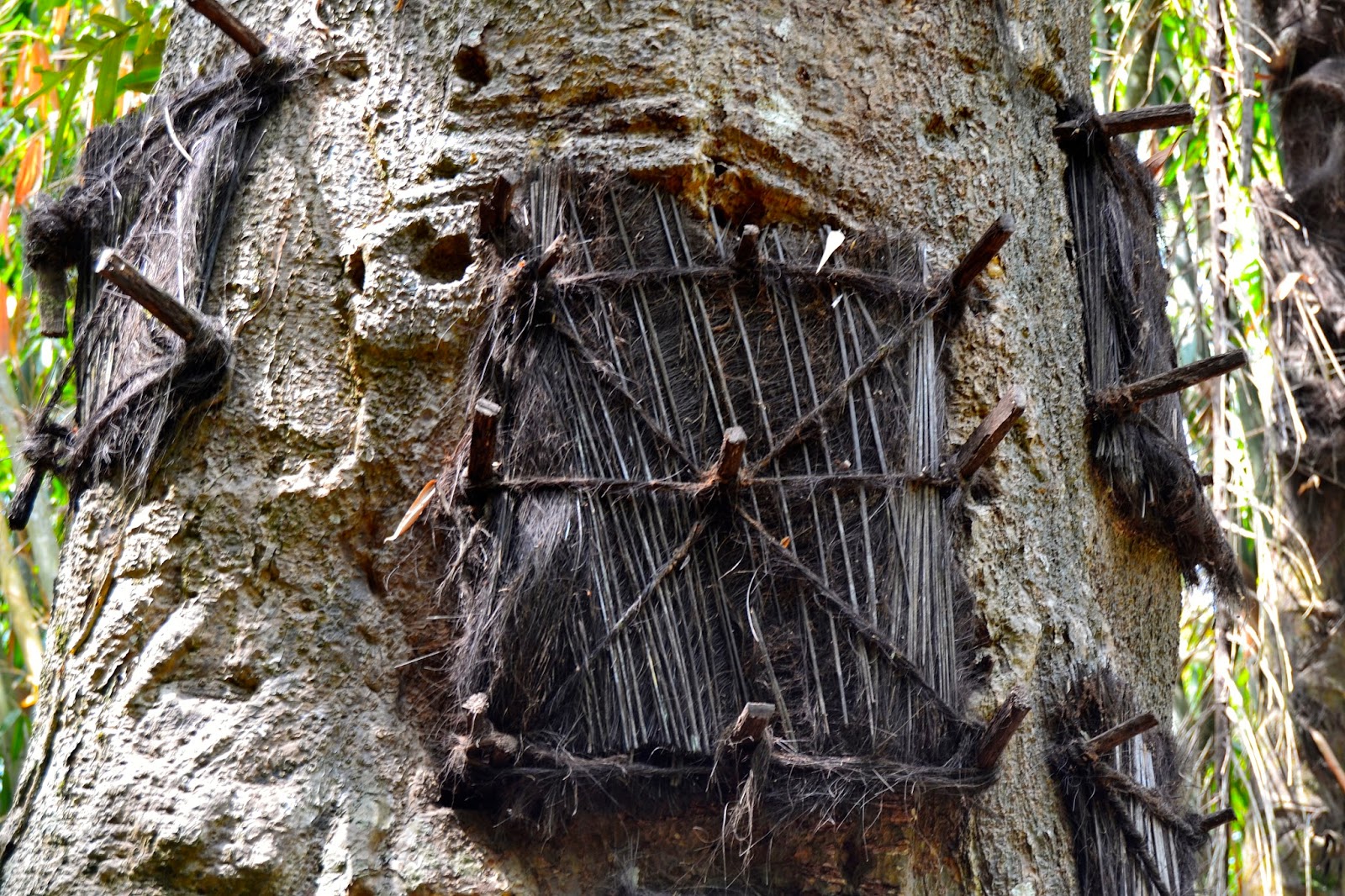Before talking with Galuh I knew very little about Tana Toraja. I thought it was just a place where a strong and sour high quality Arabica Coffee (its cultivation was first introduced 50 years ago by the Japaneses) cultivated as well as a couple of delicious types of rice , a red and a black one. The second one, in the ancient times, was produced in tiny amounts just for high rank religious, governors and politicians (I bought both of them by the way).
As the bus arrived in Toraja, a local guide, Adrian, "grabbed" us, took us to the near, central and comfortable Indra Toraja Hotel (480K IDR per day) and offered us a 2 days tour which costed, after a long bargain, 1300K IDR plus 150K IDR for some cigarettes as a present to the chief of the local tribe.
Toraja has a mild climate thanks to its location on a hill and lies 70km to the sea and has a population of 1 million inhabitants, mostly Protestant Catholic (considering all Sulawesi island, muslims are prevalent only in Makassar), religion brought by the Dutch colonizers.
Later on I discovered that the main feature of Toraja, the one which makes it famous all around the world, is its Funeral Ceremonies. We were very lucky to get there during one of this ceremony.
The siblings of the dead spend all their life collecting all the money they can for these huge and expensive ceremonies and sometimes they need to keep the corpse on their homes (the body get a formalin injection) while saving this money.
The best ceremonies are those organized by middle and upper-class families (the poors are commonly intrred) and often take place on december during Christmas time. All the siblings organize music, dances, buffalo fightings, eat together plenty of food even for the not infrequent foreigner visitors, a big number of poor pigs (crying and shouting desperately) and buffaloes are slaughtered and immediately grilled and served.
There is a general climate of happiness, smiles and curiousity by the families and friends of the dead relatives, no problem i taking photos and eating some local dish with them.
Our guide said that in the ancient times someone was able to make the dead do little works like a zombie just performing special magical prayers...who knows it really happened????
The coffin is then put inside a handcarved grave (a mountain side or, like on the slopes of the anciently erupted blouders around Mentirotiku Batutumonga dormant Volcano), grave that needs the hard work of 2 men who spend on this task 1 or more years.
Along with the graves there are also some wooden made puppets reproducing the dead. The families bring on their shoulders the coffin climbing until 10 or 20 meters using bamboo stairs, and a variant of it requires, instead of the puppets, huge rock pillars, also handcarved, that are transported by the relatives until the field that works like a cemetery. here too we can see small pillars that represent dead kids, the medium ones are for dead women while the tallest ones are reserved for men or important people. The tallest the pillar or the more buffaloes are sacrificed (the Albino buffaloes cost a fortune!) or in other words the more important the dead and the more expensive should be.
Just to give you a clue, it's like if a guy who earns 500US$ a month would save enough money to pay a 500.000 US$ worth funeral ceremony...just imagine that someone so desperate about this scaring future scenario prefers to change religion!
Last but not least we were just amazed by the way they use to bury the small babies (when they die and have not teeth yet which means they are still pure): during the night the baby family bring the tiny corpse in the countryside and dig a hole inside the trunk of a Tarra tree, put inside the body in a standing position (to help the baby sould to fly faster toward the heaven) and cover it with a fiber palm tree using its releasing material (kulimbang fibers). They live it until the tree absorb compltely the small corpse releasing all the fibers and leaving just some light "scars" on the trunk. You can use the same location on the trunk just once, we visited a famous huge
300 years old Tarra tree, no more used, which assimilated tens old baby's body in it. This tree is located in Kampung Kambira Kambira, Sangalla District, about 20 km from the town of Rantepao.
For sure Tana Toraja was one of the highlight of my trip and a place to be visited at least once in your life!














Nessun commento:
Posta un commento